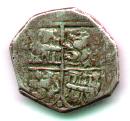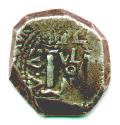
| Charles
II / Carlos II
#1855: 4 Reales Assayer / Ensayador VA (1693) Nuevo Reino 14.280 grams / gramos. | |
|
Obverse: Quartered shield with arms of Castile and Leon in correct order. Pomegranate at bottom of shield. Value IIII left of the shield (not visible on this coin). Reverse: Pillars with waves. Assayer VA to the left of the pillars, reading from top to bottom. The legend PL / VL / NoR is above and between the columns. The date of (1693) is to the right of the pillars and reads from top to bottom. R/L M60-16, L/R M60S-16, C&T Type 91, Número 439b. Anverso: Escudo cuarteado con las armas de Castilla y León en orden correcto. Granada en la base del escudo. Valor IIII a la izquierda del escudo (no visible en esta pieza). Reverso: Pilares y olas. Ensayador VA hacia la izquierda de los pilares, leyendo de arriba hacia abajo. La leyenda PL / VL / NoR está arriba in entre las columnas . La fecha (1693) esta a la izquierda de los pilares y se lee de arriba hacia abajo R/L M60-16, L/R M60S-16, C&T Tipo 91, Número 439b.
A similar coin is illustrated in Restrepo/Lasser and Calicó (R/L M58-16, Calicó Núm 527) as a 2 reales, this coin is illustrated below for comparison purposes. Una similar es ilustrada por Restrepo/Lasser y Calicó (R/L M58-16, Calicó Núm 527) as a 2 reales, esta moneda se ilustra en seguida para comparación. |
|
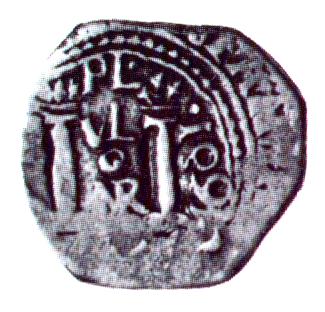 |
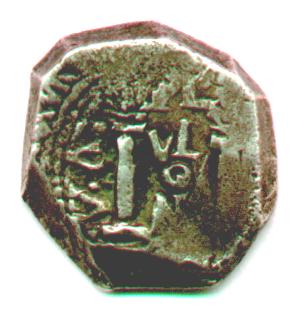 |
Image courtesy of Dr Restrepo (reverse). |
Image of
coin 1855 (reverse). |
The
reverse of these two pieces are from the same reverse die, while considering different
strike and wear, notice particularly the following diagnostics:
Los
reversos de estas dos piezas provienen del mismo troquel. Teniendo
en cuenta las diferencias en acuñación y en desgaste, se hacen los
siguientes diagnósticos:
|
|
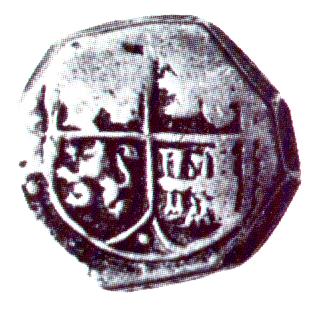 |
 |
Image courtesy of Dr Restrepo (obverse). |
Image of
coin 1855 (obverse). |
|
The obverse dies are identical too, but 1855 has been double struck with slight clockwise rotation. For comparison diagnostics notice: Los troqueles de los anversos son también idénticos pero la número 1855 tiene doble golpe con una ligera rotación en la dirección de los punteros del reloj. Favor notar lo siguiente:
|
|
|
Citations of VA 4 reales of Charles II. / Citaciones de VA reales de Carlos II In our research we find the following 4 reales coins for Charles II with assayer VA. En nuestra investigación hemos encontrado las siguientes monedas de cuatro reales de Carlos II con ensayador VA.
As can be seen, our research indicates a population of 3 pieces, this piece being the fourth. Three of the 1693 and one of the 1701. En conclusión se concreta una población de 3 piezas, siendo esta la En conclusión se concreta una población de 3 piezas, siendo esta la cuarta. |
|
|
Assayer VA, Buenaventura de Arce / Ensayador VA, Buenaventura de Arce Buenaventura de Arce held the office of assayer at Santa Fé (Nuevo Reino) from 12 - December - 1691 to 28 - November - 17212 Arce served during the reigns of Charles II and Philip V. Concerning 4 reales coins, in addition to the 1693 and 1701 dated coins there are also those dated 1721 (under Philip V). Buenaventura de Arce ocupó la posición de ensayador en Santa Fé (Nuevo Reino) desde el 12 de diciembre de 1691hasta el 28 de noviembre de 1721. Arce sirvió durante los reinados de Carlos II y de Felipe V. En relación a piezas de cuatro reales, además de la de 1693 y la de 1701, también de conocen las de 1721 bajo Felipe V. |
|
|
Metrology / Metrología At 14.280 grams, the coin is 0.54 grams over the prescribed weight of 13.74 grams for a 4 reales. Con 14.280 gramos, la moneda pesa 0.54 gramos más que el peso prescrito de13.74 gramos para cuatro reales. Because the coin is overweight we checked the density (specific gravity) of the coin by weighing it on a Mettler balance with 1 mg precision, in air and in distilled water. Here are the data: Como tiene sobrepeso chequeamos la gravedad específica pesándola en una balanza de Mettler que tiene una precisión de un miligramo, en el aire y en agua destilada con los siguientes resultados: Dry
weighings: 14.280 g, 14.280 g, 14.280 g, 14.280 g. Average to 3
decimal points = 14.280 g Density =
[14.280/(14.280-12.896)]*0.99756 - see note1: The result obtained, 10.293, indicates the coin would be 875 fine silver, compared to a specification of 933 fine. To this point in our studies we do not have a record of density values for cobs to serve as reference, therefore we can not confidently interpret the alloy based upon the density value. El resultado obtenido, 10273, indica que la moneda sería 875 fina para plata, comparada con una especificación de 933. En este punto de nuestros estudios no tenemos un record de valores de densidad para macuquinas que nos pueda servir de referencia por lo tanto no podemos concluir con confianza la aleación basados en los valores de densidad. According to Céspedes del Castillo 1 the alloyed silver used for coin making would consist of three components: the bulk silver submitted for coinage by a consignor, high fineness silver with which to adjust the consigned silver and copper. For example; if the consigned silver was 700 fine, then a quantity of fine silver such as the mint would have on hand, 980 fine for example, would be mixed with the 700 fine to bring the total fineness up to 933. De acuerdo a Céspedes del Castillo la aleación usada para hacer monedas consistiría de tres componentes: La plata sometida por el clinente para ser acuñada. Plata de alta pureza con la cual se pueda ajustar la finura y cobre. Por ejemplo si la plata entregada era 700 fina entonces la cantidad de plata que la ceca tenga a la mano con una finura, por ejemplo de 980 se mexclaría con la de 700 hasta alcanzar una finura de 933. The difficulty in determining fineness of the silver lies in the fact that we don/t know what the hypothetical 300 fine or 30% of the consigned silver consisted of. It may have been copper but could have been other materials, that is why a comparison to densities of other coins would be beneficial. La dificultad para determinar la finura con base en la densidad es que uno no sabe que tipo de metal formaba el 30% de la plata original. Pudo haber sido cobre pero también otros metales, así que sería muy interesante conocer la densidad de otras monedas. |
|
| Because the coin is overweight
we consulted with
three experts, all very well known and highly respected. All agree with
us that the coin is consistent with design and strike of
legitimate pieces, but there is some skepticism about a genuine coin
being 4%
overweight. Therefore we have more research to do. Como
el peso de la moneda supera el oficial, consultamos con tres
peritos muy reconocidos y respetados. Todos estuvieron de acuerdo
con que el diseño y el troquelado eran compatibles con los de
piezas legítimas pero hubo dudas en el sentido de que una moneda
legítima tuviera 4% de sobrepeso.
In Numis-Notas magazine Number 107, July 2003, Dr Restepo published a commentary on this coin. "This overage in weight caused doubt even though it is known that the overweight cobs were noted as ”strong” and underweight ones were classified as "'weak"". En la revista de Numis Notas Numera 107, julio 2003, el Dr Restepo publicó un comentario en esta moneda. "Este sobrepeso causó preocupación auncuando es conocido que las macuquinas que superaban el peso se anotaban como ”fuertes” y las que quedaban escasas eran clasificadas como "febles”". |
|
(1)
Guillermo Céspedes
del Castillo,
Las Casas de Moneda en Los Reinos de Indias, Volumen I, Las Cecas Indianas en
1536-1825, (Madrid:
Fábrica Nacional de Moneda y Timbre, 1996) pp. 130-140.
(2). A.M. Barriga Villalba, Historia de la Casa de Moneda.
(Bogotá: Banco de la Republica (de Colombia) 3 tomos.1969.) Tomo I, pp.
125-126.
©Copyright Herman Blanton 2003, all rights reserved.


